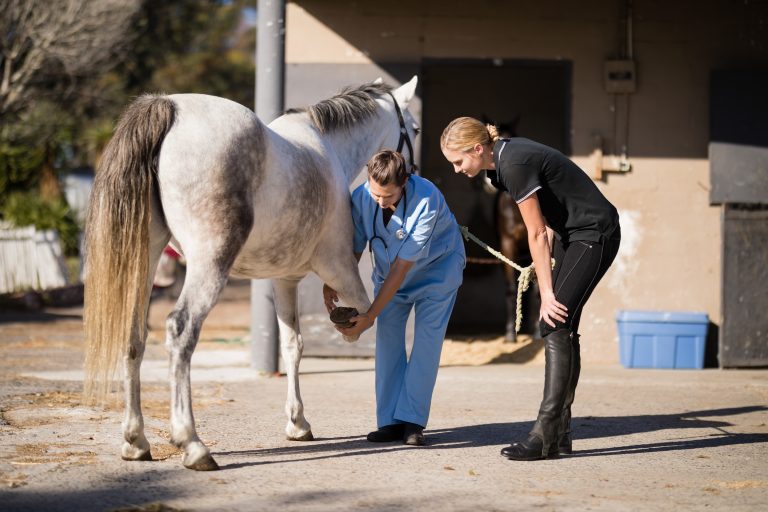
are explained and available to each staff member and are followed by all.
Processes and policies in an equine veterinary practice are important for many reasons, said Amy Grice, VMD, MBA. “Processes and policies uphold trust in your organization,” noted Grice in this podcast.
She said processes and policies can be as simple as writing down how you handled a situation. This ensures that you handle a similar situation in the same manner if it occurs in the future.
“It feels like an incredibly hard job, but just start small,” she advised. “And make sure your staff knows your processes and policies.”
Changing Processes and Policies
Grice went through multiple scenarios where having processes and policies can help your equine veterinary business.
She said if you don’t have a policy for client pay, you might struggle with the decision to make a change with current clients that are “good pay.”
Grice said there were two ways to address changing the payment policy for an equine veterinary practice. The first is to change it as you get new clients. They are told that payment at time of service is required. Then the practice can let long-term clients pay as they always have. The second way is to make the policy effective “across the board.” Explain it carefully to all of your clients so they understand and can be prepared with a payment form when services are provided.
Fair and Equitable Treatment
Grice said practice owners need to treat employees fairly and equitably. “You might not remember what you did in a situation, but your employees will,” Grice said.
She gave the example: If an employee’s house burns down, the practice writes a $2,000 check because the person is a valued employee. Four or five years go by, and staff members still remember what you did.
“Talk about a situation in the future and how you could handle it so that it is fair,” said Grice. “We get older and we might not remember.” But she said the staff will remember.
Processes and Practices Around Risks
Grice discussed some of the processes and practices a veterinary business needs because of inherent risks of doing business. That might include situations such as OSHA issues or handling of controlled substances.
“You need an SOP (standard operating procedure) manual so employees don’t wonder what to do,” said Grice.
Other Areas of Benefit
Grice said that also can include how to on-board a new employee or how to handle a task or situation the way the practice wants them to.
“Give your staff tools to work with independently to accomplish tasks,” said Grice. “Cover how to handle certain situations, such as an unhappy client. Who gets the call in which situation, the office manager or the vet?”
Grice said you also need to “set expectations and guidelines” on what the practice can do that is fair and legal. That might include maternity leave or how to handle an employee who is diagnosed with cancer and wants to keep working as much as possible.
“You need to treat each situation fairly and equitably,” said Grice.
She reminded that processes and policies should be easily available to everyone. She said they should “live electronically” somewhere that all employees have access, and also have a printed form that is accessible.
She also reminded equine veterinary business owners that they have to follow the processes and policies set for the organization.
“All organizations—your state veterinary organizat, the AAEP, or your church vestry—has processes and policies,” noted Grice. “When processes and policies break down, the trust in the organization breaks down. A veterinary practice is a small organization. That same breaking down of trust can happen.”
Resources for Processes and Policies
Grice offered the following books that can help equine veterinary practices understand and create processes and policies.
The Checklist Manifesto: How to Get Things Right
You also can read this roundtable discussion The Balance of Passion and Practice in Equine Veterinary Life.
Disclaimer
This content is subject to change without notice and is offered for informational use only. You are urged to consult with your individual business, financial, legal, tax and/or other advisors with respect to any information presented. Synchrony and any of its affiliates, including CareCredit (collectively, “Synchrony”), make no representations or warranties regarding this content and accept no liability for any loss or harm arising from the use of the information provided. All statements and opinions in this article are the sole opinions of the author and roundtable participants. Your receipt of this material constitutes your acceptance of these terms and conditions.








